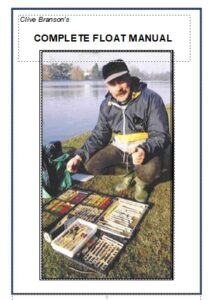🪶 The Stick Float
Introduction
The stick float is arguably the second most popular float in a natural angler’s tackle box, second only to the waggler. It first appeared on the angling scene in the late 1950s, quickly revolutionising running water fishing.
Its arrival coincided with the rise of caster bait, and together they transformed match fishing across Britain. Much of the development and innovation came from one of the greatest angling families in history — Benny and Kevin Ashurst. Their pioneering work set the standard for modern float presentation.
🧭 Why the Stick Float Was a Game Changer
The stick float quickly gained nationwide popularity, dominating match results week after week. Its real strength lay in how it allowed for an incredibly natural bait presentation.
By over-depth shotting the rig — often with shot spaced like shirt buttons down the line — anglers could hold back and release the float as it travelled downstream. Each time the float was checked, the bait would rise slightly; when released, it would fall again. This subtle, lifelike movement proved irresistible to fish and produced exceptional catches.
🪵 Design and Development
Although the concept remains the same, stick floats have evolved significantly since those early days. Modern versions feature aerodynamic body shapes and benefit from improved materials for weight, balance, and stability.
Traditionally, a stick float is made from a blend of balsa and cane:
-
🪶 Balsa at the top provides buoyancy and clear bite indication.
-
🪵 Cane at the base adds weight and balance for casting and control.
Getting this balance exactly right is crucial. Too much weight and the float sinks; too much buoyancy and it rides unnaturally. When set correctly, the stick float becomes an incredibly delicate and precise tool.
🧲 Rigging and Shotting
Stick floats are always attached using rubbers at the top, middle, and bottom. They’re typically shotted so only a tiny dot of the float shows above the surface, allowing for ultra-sensitive bite detection.
Shotting patterns can vary, but a shirt-button style (gradual spacing down the line) remains a classic choice. Adjusting shot placement also allows the angler to adapt to different flow speeds and depths.
🪝 Casting and Presentation Techniques
-
🎯 Side casting is ideal for laying out the shot and achieving a soft, natural bait fall.
-
🏹 Overhead casting is slightly trickier but perfect for reaching mid- or far-bank swims with practice.
-
🎣 Expect bites on the drop or as the bait runs through the swim.
-
⚖️ Dragging shot along the bottom or holding back to slow the bait can be devastatingly effective.
In windy conditions, placing extra shot above the float can help reduce line bow. Applying line grease above the float makes line mending smoother without disturbing presentation.
🏆 A Classic That Still Wins Matches
Even in the era of modern materials and commercial venues, the stick float remains a match winner. Its ability to combine delicate presentation with control in running water makes it an essential part of every serious angler’s kit.
Mastering the stick float is as relevant today as it was in the 1950s — a true classic of the sport.

STICK FLOATS LINKS BELOW
Order the Complete Float Manual
📘 The Float Manual — over 167 pages of knowledge, techniques, and illustrations — is now available.
To order, simply click the book image or contact me directly:
📩 clive@angling-news.co.uk

📘 Download the Complete Float Manual – Instant Access
Bring decades of float-fishing knowledge straight to your screen.
Written by World Champion Clive Branson, The Complete Float Manual is a 167+ page eBook packed with practical techniques, classic float designs, diagrams, and championship-winning methods.
✅ Learn how to use wagglers, stick floats, pole floats and more
✅ Discover the history and evolution of float fishing
✅ Get pro tips and tactics used at the highest level
✅ Ideal for beginners and experienced match anglers alike
💻 Instant Download (PDF) — no waiting, no shipping
💳 Secure checkout with PayPal
👉 Order now and start reading within minutes.